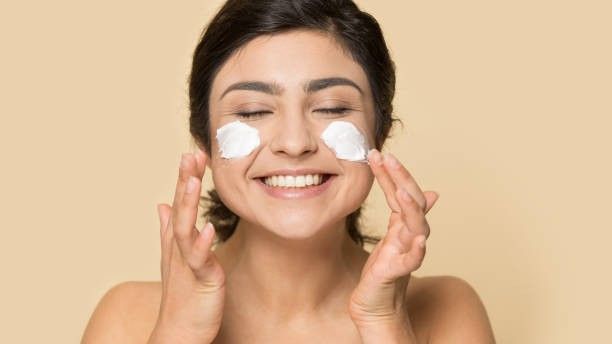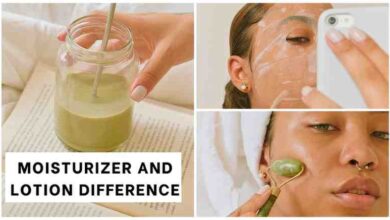Why A Ceramide Moisturizer for Oily Skin Is Your Secret Weapon Against Shine

If you have oily skin, you’ve likely been told to steer clear of moisturizers. This is a common skin care myth that has made those with problematic skin question why their skin never improves. Oily skin, too, needs some proper hydration. A ceramide moisturizer for oily skin is one of the best choices to keep your face clear, moisturized, and healthy without the greasy residue.
Backed by dermatologists and scientific research, ceramides have proven to be a skin-barrier savior. Unlike traditional heavy creams that can clog pores and increase greasiness, they work with your skin’s natural processes to restore balance without adding unwanted shine.
In this article, you’ll discover why a ceramide moisturizer might be the missing piece in your skincare regimen, learn how to choose the best ceramide moisturizer for oily skin, and how to use it effectively for optimal results.
Understanding Oily Skin: What Causes Oily Skin?
Oily skin occurs when your sebaceous glands produce excess sebum, the natural oil that keeps your skin protected and moisturized. While sebum is essential for a healthy skin barrier, too much of it can lead to clogged pores, blackheads, whiteheads, and acne.
Multiple interconnected factors contribute to this overproduction, creating the characteristic shiny, greasy appearance that defines oily skin types. Understanding these root causes is crucial for developing an effective skincare strategy.
For starters, genetics determines your baseline oil production levels. If one of your parents has oily skin, you’re more likely to experience similar challenges throughout your life.
Hormonal changes represent one of the most significant triggers for increased oil production. During puberty, rising androgen levels stimulate sebaceous glands to work overtime. Women often notice increased oiliness during specific phases of their menstrual cycle, particularly in the days leading up to menstruation when hormones fluctuate dramatically. Pregnancy can also trigger significant changes in oil production due to hormonal shifts.
Hot and humid weather conditions can also cause your skin to produce more oil. People living in tropical climates often report increased oiliness and a higher tendency for clogged pores during warmer months.
Another factor that can lead to excess oil production is harsh skincare products. While these products can strip your skin of natural oils, they can result in a rebound effect where your glands produce even more oil to compensate.
Understanding these triggers is the first step toward managing your oily skin effectively and choosing skincare products that restore balance without making things worse. That’s where using the right moisturizer with ceramides for oily skin can make a noticeable difference.
What Are Ceramides and Why Do They Matter for Oily Skin?
Ceramides are essential lipid molecules that naturally occur in the uppermost layer of your skin. These waxy lipids make up approximately 50 percent of your skin’s natural barrier, helping plump the skin and retain moisture.
Your skin naturally produces several types of ceramides, with each playing a specific role in maintaining skin health, from preventing water loss to protecting against environmental damage.

As we age, our natural ceramide production decreases, leading to compromised barrier function and increased sensitivity. This reduction becomes particularly problematic for oily skin types, as a weakened barrier can trigger compensatory oil production.
Environmental stressors, harsh cleansing, and certain skincare ingredients can also deplete your skin’s natural ceramide levels, making topical replenishment through an oily skin-based ceramide moisturizer essential for optimal skin health and balance.
Why Traditional Moisturizers Fall Short for Oily Skin
Most conventional moisturizers are formulated with heavier oils and occlusives that can overwhelm already oil-prone skin. These ingredients sit on the surface, creating a greasy layer that mixes with natural sebum to create an even shinier appearance.
They also contain comedogenic ingredients that can clog pores and contribute to breakout formation. The pore-blocking ingredients prevent the skin from breathing naturally and can trap bacteria beneath the surface, causing acne and breakouts.
Heavy moisturizers can also interfere with other skincare products, preventing serums and treatments from penetrating effectively. This reduces the overall efficacy of your skincare routine and can leave you frustrated with lackluster results.
A ceramide moisturizer is the answer to these issues, offering hydration without heaviness.
How Ceramide Moisturizers Work Differently for Oily Skin
So, why should someone with oily skin use a ceramide moisturizer?
1. Non-greasy hydration
Unlike heavy creams, ceramide moisturizers are lightweight formulations that penetrate quickly into the skin rather than sitting on the surface. This allows them to provide moisture without leaving a greasy residue, perfect for oily skin types.
2. Barrier repair without clogging pores
The unique molecular structure of ceramides allows them to integrate seamlessly with your skin’s existing barrier structure. This integration helps restore proper barrier function without adding without suffocating your skin.
3. Balancing oil production
A ceramide moisturizer will help regulate the signals that trigger excess oil production, reducing shine and breakouts over time.
4. Help keep the skin smooth and plump
A ceramide moisturizer will improve the texture of your oily skin, making it smoother and more resilient. Additionally, it preserves the firmness, elasticity, and plumpness of the skin, giving the illusion of youthful skin.
5. Enhanced product absorption
A healthy skin barrier created by regular ceramide use also improves the absorption and effectiveness of other skincare products. When the barrier is intact, active ingredients like retinoids, vitamin C, and acne treatments can penetrate more effectively and work more efficiently.
Choosing the Right Ceramide Moisturizer for Oily Skin
While ceramides are crucial for all skin types, they’re often misunderstood when it comes to oily skin. Moreover, choosing the right ceramide moisturizer for oily skin can be challenging. You want a product that hydrates your skin without leaving it greasy or clogging your pores. Let’s discuss how to select the right one for your needs.
Look for Key Ingredients
When choosing a ceramide moisturizer for your oily skin, look for formulations that contain a variety of ceramides for full barrier protection. The most effective products typically include ceramide 1, 3, and 6-II in meaningful concentrations.
- Ceramide 1 (ceramide EOP): Maintains the skin’s barrier integrity and prevents excessive water loss.
- Ceramide 3 (ceramide NP): Focuses on barrier repair and maintenance, making it essential for oily skin that has been compromised by over-cleansing or harsh treatments.
- Ceramide 6-II (ceramide AP): Supports the skin’s natural exfoliation process and helps maintain smooth texture.
Look for products that have complementary components like hyaluronic acid and niacinamide, as these will increase the efficiency of a ceramide moisturizer. Likewise, avoid substances like thick butters, heavy oils, and comedogenic compounds that may negate the advantages of ceramides.

Consider the Texture and Formulation
Gel-based ceramide moisturizers offer the lightest feel and are ideal for very oily skin types. They absorb fast, hydrate skin without any residual tackiness, and won’t weigh your skin down.
If you are looking for a bit more moisture, go for a lightweight ceramide moisturizer. It still absorbs quickly but gives you a touch more hydration, which is perfect if your oily skin experiences dryness in certain areas.
The rule of thumb is that your moisturizer should feel light and disappear into your skin within 1-2 minutes of application. If it leaves a residue or takes longer to absorb, it may be too heavy for your skin type.
Non-Comedogenic Certification
Always choose products labeled as non-comedogenic, as they are formulated not to clog pores. While this is not a guarantee that every person will avoid breakouts, it significantly reduces the risk for most people with oily, acne-prone skin.
How to Use Ceramide Moisturizers Effectively for Oily Skin
Now that you know what to look for (and out for) in a perfect ceramide moisturizer for your oily skin, how will you incorporate it into your skincare routine?
What’s The Best Time to Apply It?
For best results, use the ceramide moisturizer twice each day—once in the morning and once at night. Morning application provides a smooth base for sunscreen and makeup while protecting your skin throughout the day.
Evening application allows the moisturizer to work overnight when your skin’s natural repair processes are most active. You can adjust how often you use it based on how hydrated your skin feels.
Morning Routine
- Use a gentle, oil-free cleanser to clear overnight buildup.
- Apply any targeted serums (for example, niacinamide or vitamin C) to boost brightness and calm oil.
- While skin is slightly damp, apply your ceramide moisturizer and press it in gently to lock moisture in.
- Finish with a broad-spectrum sunscreen (SPF 30+). Moisturizer primes your skin and improves SPF adherence.
Evening Routine
- Cleanse to remove dirt, oil, makeup, and sunscreen.
- Use your specific treatment (retinoid, acid, or acne medication).
- Allow 1–2 minutes for absorption, then apply your ceramide moisturizer as the final step to support overnight barrier repair.
Common Mistakes to Avoid with Ceramide Moisturizers
1. Over-application
Oily skin does not need excessive amounts of moisturizer, and over-application can lead to a heavy, greasy feeling that defeats the purpose of using a lightweight ceramide formula.
Start with less than you think you need and gradually increase if necessary. It is better to apply a thin layer twice daily than to use too much at once.
Avoid applying ceramide moisturizer to completely dry skin, as this can make it harder to spread and absorb. Slightly damp skin helps with distribution and hydration.
2. Product layering errors
Be cautious about mixing ceramide moisturizers with oil-based serums or treatments, as this can create a heavy combination that might clog pores. If you use facial oils, apply them sparingly and consider alternating them with your ceramide moisturizer rather than layering them.
3. Using immediately after exfoliation
Do not use the ceramide moisturizer immediately after strong exfoliating treatments like chemical peels or high-concentration acids. Allow your skin to recover for a day or two before resuming regular moisturizer use.
Ceramide Moisturizers and Friendly Actives
Ceramides complement powerful actives by mitigating potential side effects:
- Retinoids: While effective for texture and anti-aging, retinoids can be drying or irritating. Ceramides restore hydration and reduce redness.
- Vitamin C: Supports collagen and brightening, but sometimes causes sensitivity. Ceramides help maintain balance.
- Acne Treatments: Ingredients like salicylic and benzoyl peroxide treat acne effectively, but can upset oily skin. Ceramides ease the impact and encourage smoother healing.
Always apply actives first, then seal hydration with ceramides.

Final Thoughts
A ceramide moisturizer tailored for oily skin can be the A-game to your skincare, reducing shine and breakouts, improving barrier health, and boosting other products’ effectiveness. However, like all skincare products, ceramide moisturizers won’t benefit every individual equally, as skin chemistry varies significantly from person to person.
Take time to evaluate your current skincare routine and consider whether adding a ceramide moisturizer could be beneficial to your oily skin care puzzle.
FAQs
Q1: Can oily skin use ceramide-based moisturizer?
Q2: How long does it take to see results?
You’ll likely notice improved hydration and comfort within the first week. With consistent use, skin texture and balance may continue to improve over time.
Q3: Can I use ceramide moisturizer with acne medications?
Yes, ceramide moisturizers can help reduce dryness and irritation from acne treatments like salicylic acid or retinoids. Apply your medication first, let it absorb, then follow with the moisturizer.
Q4: Are ceramide moisturizers good for all ages with oily skin?
Yes. Teens with oily or acne-prone skin can benefit from lightweight versions, while adults might prefer formulas that also support aging skin and barrier repair.
Q5: Should I still use a separate sunscreen with a ceramide moisturizer?
Yes. While some ceramide moisturizers may contain SPF, dedicated sunscreen products provide more reliable protection. Apply your moisturizer first, allow it to absorb completely, then apply sunscreen as your final morning step.
Q6: Can I use ceramide moisturizer year-round?
Definitely! Ceramide moisturizers work effectively in all seasons. You might choose lighter formulations during hot, humid summer months and slightly richer versions during cold, dry winter weather to accommodate seasonal skin changes.
Q7. Are ceramide and vitamin C good for oily skin?
Yes, ceramide and vitamin C work well for oily skin, too. Ceramides reinforce the skin barrier without causing breakouts, and vitamin C brightens, fades acne marks, and regulates oil production. The former both smooths texture and promotes the health of your skin as a whole.
Q8. How much is ceramide moisturizer for oily skin?
Ceramide moisturizers for oily skin are what I would consider average in price range—₹300-₹600 in India. They provide light hydration, reinforcing the skin barrier and decreasing sebum without forming buildup, which makes them suitable for acne-prone and sensitive oily skin.



